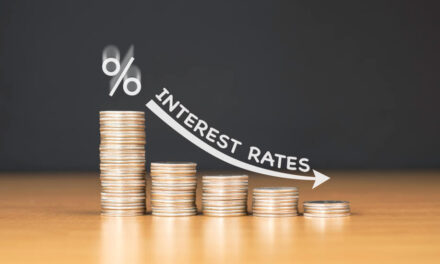It’s official, the yield curve has inverted.
The yield on the 10-year Treasury fell below the yield on the 2-year note, which has been one of the most reliable recession indicators of the past 50 years. The yield on the 30-year bond also fell to an all-time low, dipping below its previous record low in the summer of 2016, according to CNBC.
The inversion comes amid increased worries of a global economic slowdown as investors make their way to safer havens as a trade war between world’s two largest economies wages on.
The yield on the benchmark 10-year Treasury note fell to 1.623% early Wednesday morning, lower than the 2-year yield, which was at 1.634%. The last inversion of the yield curve happened in 2005, about two years before the worst recession since the Great Depression began to sink markets in the U.S. and around the world.
The yield on the 30-year Treasury bond was trading at 2.061% this morning, which was less than its record low of 2.9889% in 2016 just after the Brexit vote in the U.K.
Yields fall when bond prices rise as investors flee stock markets for safer havens, which causes the yield curve to invert. The 2-year/10-year inversion gets the most attention as a recession indicator, though, there is usually a year or two before the recession really starts to take hold.
According to Credit Suisse, data going back to 1978 shows the last five 2-year/10-year inversions preceded a recession; the recession generally occurred about 22 months after the inversion, the S&P 500 is up about 12% one year after a 2-year/10-year inversion; and it’s about 18 months following the inversion that the stock market begins posting negative returns.
“This is a track record any economist would be proud of,” Loyola Marymount economics professor Sung Won Sohn told CNBC. “If the inversion started today, the economy could be in a recession within a year.”
Central banks the world over have already begun cutting rates, and the U.S. just cut rates for the first time in 11 years.
The yield on the 1-year Treasury note, which helps banks set mortgage rates, has fallen 40 basis points, or 0.4%, this month alone.
“The U.S. equity market is on borrowed time after the yield curve inverts. However, after an initial post-inversion dip, the S&P 500 can rally meaningfully prior to a bigger U.S. recession related drawdown,” Bank of America technical strategist Stephen Suttmeier wrote in a note to clients.
The 3-month yield also topped the 10-year yield earlier this year.
Investing professionals surveyed by Bank of America Merrill Lynch are the most bullish they’ve been since 2008. A poll showed 43% of them see lower short-term rates in the next year, while just 9% saw higher long-term rates.
“While yield curve inversions can be a leading indicator of economic weakness or recession, they are an early warning sign,” Suttmeier said.




